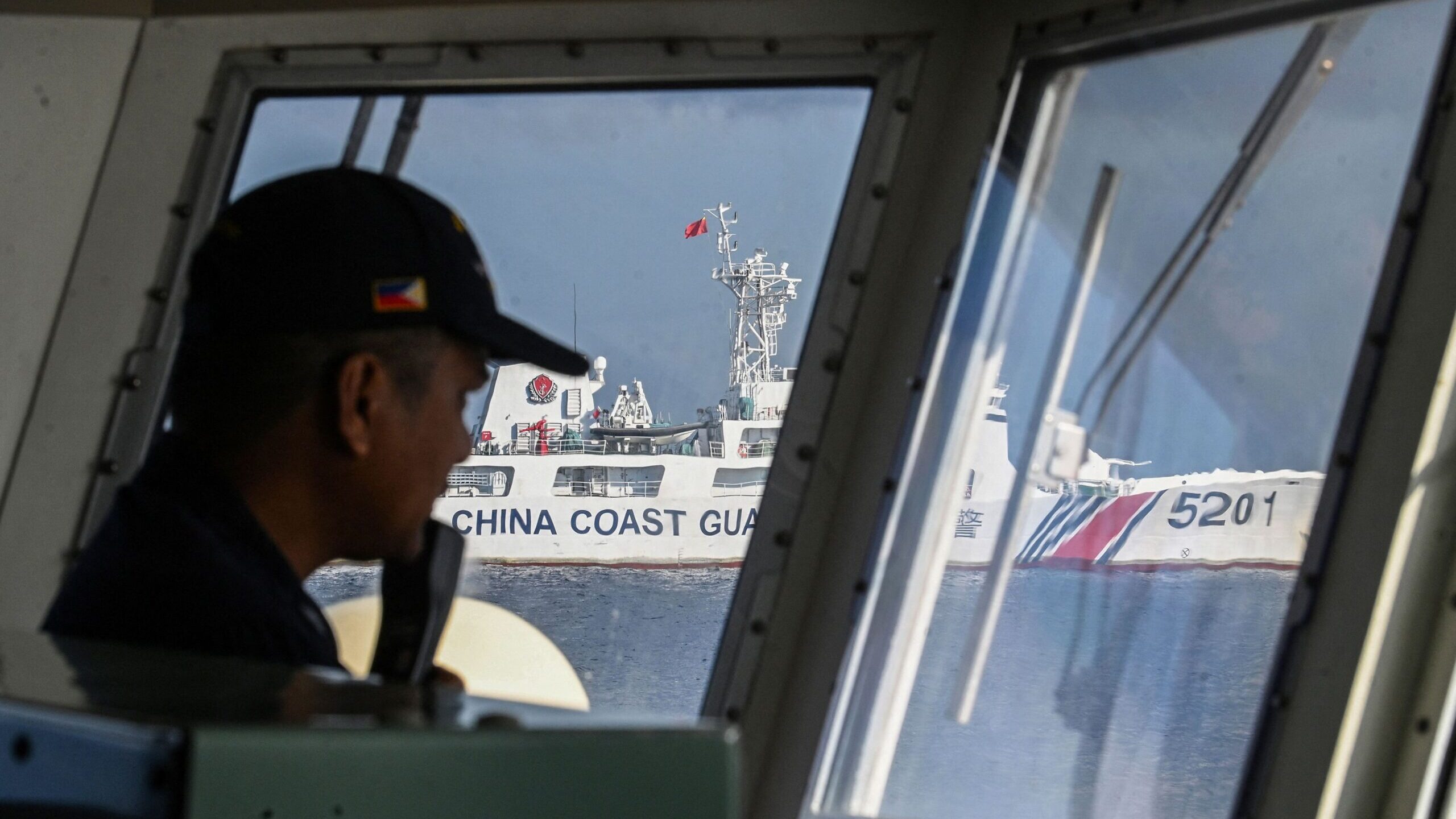
This photo taken on April 23, 2023 shows a member of the Philippine coast guard vessel BRP Malabrigo manning his post while being shadowed by a Chinese coast guard ship at Second Thomas Shoal in the Spratly Islands in the disputed South China Sea. (Photo by TED ALJIBE/AFP via Getty Images)
LANPAC 2023 — While China was not officially a topic during the three-day conference in Honolulu on “emerging changes to warfare,” the people’s republic cast a very long shado.
“The Philippines is facing the threat every day in South China Sea. The threat is real for us, because every day our fishermen are pushed away from our Exclusive Economic Zone,” Lt. Gen. Romeo Browner, commanding general of the Philippine Army, told several hundred attendees. “Whenever we fly in our own territorial waters, we are challenged by the Chinese, challenged because they say we are in their territory, when in fact it is our territory.”
A key asset for the relatively small, if all too experienced, Philippine military in such cases to respond is the ability to use multilateral exercises for strategic messaging. The first two audiences for such displays are the Philippines’ own troops and then the broader community, whose support they need.
“The third audience,” Browner said, “would be, of course, the enemy. We are giving them the impression that we are united together as nations and, if push comes to shove, then we are ready. We are ready to fight them together.”
RELATED: US-Philippines discuss ‘roadmap’ for weapon buys, including potential multi-role fighter sale
That idea, messaging to adversaries that any fight would include a wide range of allies and partners, has been a theme for US officials of late, both from a strategic and tactical perspective. On the tactical side, Breaking Defense asked the head of Army Futures Command, Gen James Raimey, what two systems were most needed to improve Indo-Pacific deterrence.
“Since you asked me, the command and control system, right? We need to get going faster. Interoperability is great, but we need to be integrated. We need to be able to move information so we can take full advantage of the coalition partners and the joint force. And we’ll figure that out,” he said, emphasizing that his response was his opinion and not official Army position. “We are getting better at that but we couldn’t do it right now. But the unrealized potential of algorithmic warfare and leveraging technology at the speed of combat is probably the clear number one, and number two would be a tie between protection and sustainment.”
The protection element is not, Raimey said, “all about kinetics. It’s about deception. It’s about small groups who have the advantage of land-based fires, as it’s easier to move and hide than it is is in other domains.”
The sustainment and logistics issues were a regular topic of conversation throughout LANPAC, which seems natural given the vast distances of the Indo-Pacific.
The US Army’s aviation side just wrapped up an exercise explicitly designed to test data sharing with allies on the future battlefield. And during the next Talisman Saber exercise — the largest ever, held on its tenth anniversary — a key part of the exercise will be a new “joint logistics command,” Gen. Charles Flynn, head of US Army Pacific, said Tuesday. He said it will be the first one deployed and it will be used to test “new and innovative ways to sustain the joint force across the vast distances of the Pacific.”
The exercise, to be held in July and August, will boast almost double the number of troops involved in 2021, with approximately 30,000 military personnel. Fiji, Indonesia, Japan, South Korea, New Zealand, Papua New Guinea, Tonga, France, United Kingdom, Canada and Germany and, of course, the United States, will take part. The Philippines, Singapore and Thailand plan to attend as observers.








